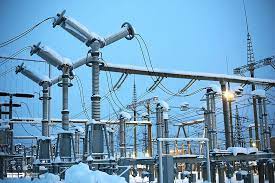Islamabad May 22 2022: Pakistan power generation in April rose 23.7 percent to 12,960 Giga Watt hours (GWh) from 10,481 GWh a year ago due to above normal temperature during the month , according to data shared by the National Electric Power Regulatory Authority (NEPRA).
The rise in generation was owed to higher generation from RFO, Nuclear, Wind and Solar. Moreover, electricity generation is up 24.0 percent from 10,448 GWh from the previous month.
Interestingly, generation of electricity from Nuclear rose significantly by 111 percent to its highest level of 2,251 GWh when compared with generation of 1,067 GWh in the same month of last year. The fuel cost of generation on Nuclear was PKR 1.0137 per unit which was lowest among all thermal based source. Nuclear based electricity generation increased by 42.0 percent when compared with generation of 1,966 GWh in April 2021, as per the data published by NEPRA.
Solar and Wind based power generation increased by 28.3 percent and 135.6 percent to 87 GWh and 465 GWh during the month of April 2022 when compared with same month last year.
The per-unit fuel cost of electricity generation on Coal was PKR 14.3362 in March versus PKR 28.1909 on RFO and PKR 16.4301 on RLNG, data showed.
Power generation on coal declined 11.1 percent to 2,169 GWh when compared with the same month last year. Coal power generation in the country peaked at 2,917 GWh in January this year before sliding back to 2,169 GWh in April. As a ratio of total generation in any given month in the last three years since the beginning of 2018, the share of coal power also drop from its peak of 33.2 percent touched in January 2022 to 16.7 percent in March 2022. According to data, share of coal generation in the country’s total electricity output bottomed to 9.2 percent in September 2018.
In the last five years Pakistan has aggressively pursued coal power under the multi-billion-dollar China-Pakistan Economic Corridor (CPEC) initiative as well as outside it, increasing coal-based capacity from negligible to 4,620 megawatts. With seven other coal-based projects under construction, the country expects to add 4,590 megawatts by the end of 2026.
Power generation on RLNG decrease 2.1 percent to 2,517 GWh when compared with the same month last year and gas based generation declined by 0.1 percent to 1,217 GWh when compared with the same month last year.











